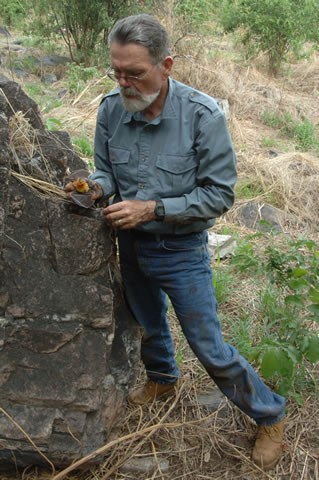Consulting | Bats | Rodents |
|
After six years of serving as senior scientist and operating a field office for a large consulting firm, I became an independent consultant in 1984 and became O'Farrell Biological Consulting. Although I had gained significant experience in a wide variety of projects and managed large-scale multidisciplinary field projects, I had been working diligently to develop a specialized niche for my services. I concentrated on contracts dealing with small mammals: baseline inventory, habitat affinities, and population assessment. Rodents and bats being my specialties, I concentrated in securing contracts with sensitive species. Bats were not being addressed by state or federal mandate so little work was available. However, the rapid expansion of housing and industrial development in southern California triggered agency scrutiny on a growing list of rodent species. The latter half of the 1980s and early portion of the 1990s became incredibly busy but mainly devoted to endangered and threatened rodents. We did get some variation with a number of large-scale desert tortoise surveys in the early 1990s. Whenever the opportunity arises, we still do tortoise contracts. Within recent years, bats have enjoyed more agency scrutiny creating the need for competent bat workers. This coincided with an opportunity for me to evaluate new ultrasonic acoustic detection equipment being manufactured in Australia. In 1999, my good friend Jim Simmons allowed me to collaborate in testing long-wave infrared technology for the study of free-flying bats. The rapid expansion of technology has equally expanded our horizons in pursing the answers to difficult biological questions. I consider myself extremely fortunate in occupying such a special niche. |
|
|
|
